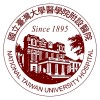
Risk Screening and Assessment of Shoulder, Neck and Lower Back Discomfort.
Low Back PainNeck Pain1 moreIdentifying high-risk factors that may lead to shoulder, neck and lower back discomfort and contributing to the primary prevention of disease progression.

Transcutaneous Electrical Nerve Stimulation (TENS) in Chronic Pain, Responders and Non-Responders?...
Neck PainLower Back Pain1 moreTranscutaneous electrical nerve stimulation (TENS) is a frequently applied therapy in chronic pain. Although evidence regarding the effectiveness of TENS in chronic pain is inconclusive many patients continue using TENS on long term in daily practice. An important question is therefore why some patients respond well and others don't at all. In chronic pain evidence for abnormal pain processing (sensitization) has been found in several patients groups. The process of sensitization might influence effectiveness of TENS as the theoretical working mechanism of TENS is based on the modulation of the transmission of nociceptive impulses form peripheral receptors throughout spinal nerve system into the brain. In this study we want to study the effect of TENS on pain transmission, as measured by contact heat evoked potentials (CHEPS), between 'responders' and non-responders' after a two weeks TENS treatment. 'Responders' will be defined as patients with a pain reduction of ≥ 30% on a VAS after a two week treatment period with TENS. Non-responders are patients with a pain reduction < 15%. Objective: a) Is pain reducing effect TENS in responders based on modulation of pain transmission and perception, as measured by CHEPS? b) Is the ability of TENS to modulate pain transmission and perception influenced by abnormal pain processing? Prospective cohort study Patients with chronic non specific pain (duration > 6 months), above 18 year, will be included. Patients are referred from the Pain Clinic of the University Hospital Maastricht (MUMC). Exclusion criteria are: a) pain due to cancer, b) the use of a cardiac pacemaker, c) pregnancy, d) neurological sensory deficits, e) language and/or cognitive inability to complete the health assessment questionnaires f) previous TENS for pain relief. Patients receive a two week treatment period with TENS-treatment, as regular, at home after instruction. The frequency is set at 100 Hz and pulse duration at 250 μ sec. Patients have to use the TENS daily (minimal 4 times a day for 30 minutes). Main study parameters/endpoints are decrease in amplitude of CHEPS in responders versus non-responders.

Randomized Controlled Trail for Post Laparoscopic Pain
Shoulder PainLaparoscopic surgery is becoming a major procedure, owing to smaller incisions, shorter hospitalizations, and less post-operative pain as compared with traditional laparotomies. However, there is marked interindividual variability of post-operative shoulder-tip pain following laparoscopic surgery. The incidence of shoulder pain varies from 35% to 80% and ranges from mild to severe. In some cases, it has been reported to last more than 72 hours after surgery. The hypothesis of post-operative shoulder-tip pain is that carbon dioxide induced phrenic nerve irritation causes referred pain to C4. Therefore, we should try to do is that if we could reduce carbon dioxide retention in the pelvic cavity. This clinical controlled trial is tried to find out the practical and clinical maneuver to reduce post-operative should-tip pain following laparoscopic surgery.

The Effect of Education on Decreasing the Prevalence and Severity of Neck and Shoulder Pain
KoreanMale1 moreNeck and shoulder pain (NSP) is fairly common among high school students in Korea. Presumably, the high prevalence of NSP in Korean adolescents is a consequence of an inappropriate static position for a prolonged period of time. We suspect that proper education and posture correction for Korean adolescents may decrease the prevalence or severity of NSP. Although several studies have focused on the etiology of NSP during adolescence, few studies have addressed the management or prevention of NSP in adolescents, despite its high prevalence in this age group. The aims of this prospective study was to identify the effects of education, in terms of recognition of this issue and posture correction, on prevalence and severity of NSP in Korean adolescents

Symptoms of Degeneration in Shoulder of Wheelchair-users
DegenerationShoulder PainThe studies object is to evaluate the degeneration of overhead sports in wheelchair-using athletes. It is assumed that wheelchair users do have more symptomatic shoulder pain compared to non disabled athletes.

Burden and Outcome of Shoulder Disorders in Primary Health Care
Shoulder PainShoulder Mobility ImpairmentConsumption of medical care and outcome of shoulder pain and disability in primary care.

Physical/Self-perceived Performance and 3D Shoulder Kinematics of Volleyball Attackers With/Without...
Shoulder PainThe study aims to compare the performance and the 3D shoulder kinematics of volleyball attackers with and without scapular dyskinesis and shoulder symptoms in two physical performance measures of the upper extremity, and correlate their outcomes with a self-reported measure of function of the upper extremity.

Ultrasound Measurement of the Suprascapular Nerve
Shoulder PainSuprascapular nerve is the first nerve that branches from the upper trunk of brachial plexus. It receives signals transmitted from the fifth and sixth cervical root. The clinical importance of suprascapular nerve is mainly based on its distribution of 70% sensory innervation to the glenohumeral joint. After divided from the upper trunk, the suprascapular nerve goes laterally and posteriorly. First, it passes underneath omohyoid muscle, and then goes through the suprascapular notch and into the suprascapular fossa. At suprascapular fossa, the suprascapular nerve is just below supraspinatus muscle. If there are some problems inside the supraspinatus muscle, the suprascapular nerve below it could be compromised. After suprascapular nerve passes suprascapular fossa, it will cross spinoglenoid notch, then go into infraspinatus fossa and innervates infraspinatus muscle. Based on the important distribution of suprascapular nerve to the sensory and motor function of shoulder joint, it has great benefits to understand its normal and abnormal sonographic images in order to diagnose refractory shoulder pain cases. Although there are some studies trying to measure the size of suprascapular nerve, most of them are limited in its location at the supraspinatus fossa. Also, they do not take factors into consideration, such as the subject's sex, body index, orientation and if shoulder pain or not at that point. In conclusion, our study is aimed to explore the difference of the suprascapular nerves between the participants with and without shoulder pain and to investigate potential factors that may influence the nerve's size using high-resolution ultrasound.

Flexibility, Range of Motion and Strength Among Patients With Differing Response to the Scapular...
Shoulder PainShoulder pain may result from abnormal arm or shoulder blade (scapular) movement. These abnormal movements may result from a variety of flexibilty, motion or strength impairments. Therefore identifying any abnormal arm or scapular movement, as well as any impairments that are associated with them can help clinicians plan a proper management strategy for patients presenting with shoulder disorders. Our hypothesis is that specific impairments will be associated with abnormal arm movement, while other impairments will be associated with abnormal scapular movement among patients with shoulder pain.

Physical Performance and 3D Shoulder Kinematics of Asymptomatic Unilateral/Bilateral Overhead Athletes...
Shoulder PainThis study compares the performance and 3-dimensional shoulder kinematics between sides in unilateral overhead-throwers (volleyball attackers), bilateral overhead athletes (swimmers) and non-athletes during two physical performance measures of the upper extremity, one in an open kinetic chain position (unilateral seated shot put test) and the other in a closed kinetic chain position (upper quarter Y balance test)
